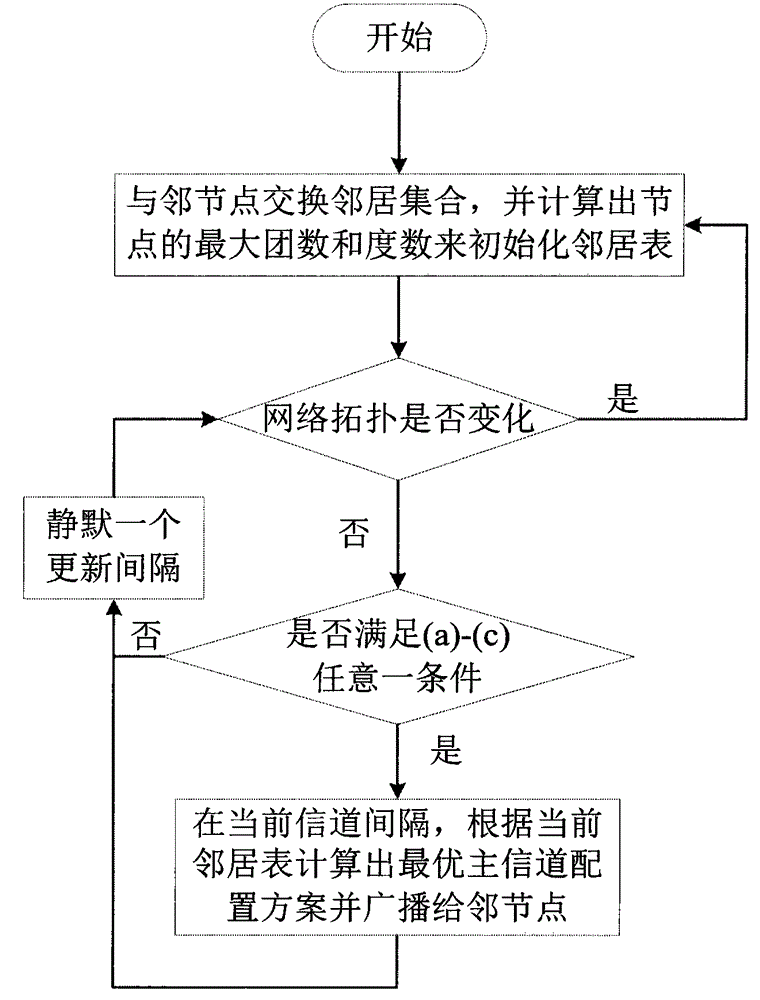Adaptive-frequency-spectrum-reuse-based femtocell interference reduction method
An adaptive and spectral technology, applied in electrical components, wireless communication, etc., can solve problems such as high signaling overhead, slow convergence speed, and algorithm failure to converge to the global optimum
- Summary
- Abstract
- Description
- Claims
- Application Information
AI Technical Summary
Problems solved by technology
Method used
Image
Examples
Embodiment Construction
[0050] In order to make the object, technical solution and advantages of the present invention more clear, the present invention will be further described in detail below in conjunction with the examples. It should be understood that the specific embodiments described here are only used to explain the present invention, not to limit the present invention.
[0051] The main channel self-configuration algorithm will be further described below in conjunction with the accompanying drawings and specific embodiments.
[0052] Such as figure 1 As shown, the specific implementation steps of the main channel self-configuration algorithm in the embodiment of the present invention are as follows:
[0053] (1) Build a neighbor table Each FAP exchanges its neighbor set information with its neighbors to calculate the maximum number of cliques and node degrees in the local interference graph, and build the following neighbor table, where i, N i , c i , d i They are the number of FAPi, ...
PUM
 Login to View More
Login to View More Abstract
Description
Claims
Application Information
 Login to View More
Login to View More - R&D
- Intellectual Property
- Life Sciences
- Materials
- Tech Scout
- Unparalleled Data Quality
- Higher Quality Content
- 60% Fewer Hallucinations
Browse by: Latest US Patents, China's latest patents, Technical Efficacy Thesaurus, Application Domain, Technology Topic, Popular Technical Reports.
© 2025 PatSnap. All rights reserved.Legal|Privacy policy|Modern Slavery Act Transparency Statement|Sitemap|About US| Contact US: help@patsnap.com



